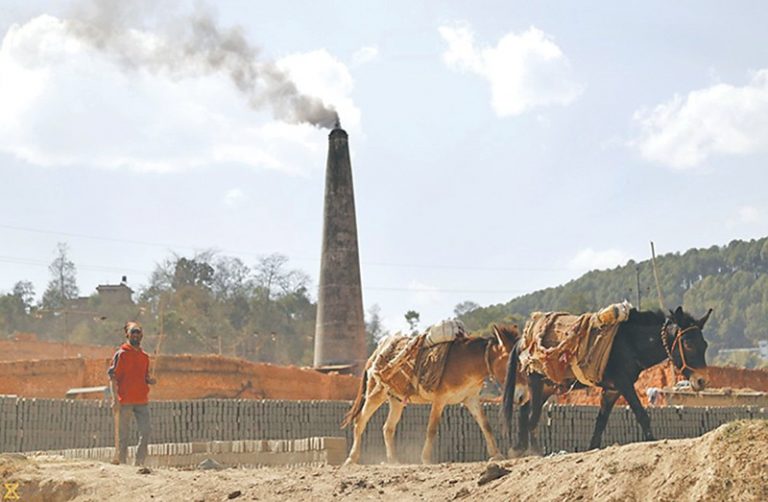
Kathmandu, Feb 5, 2018
Lumbini is polluted than Kathmandu by more than one and a half times, said the Department of Environment (DoE).
Data received from the air quality monitoring system shows that Lumbini has more polluted particles than Kathmandu, said Joint Secretary of the DoE Mohan Dev Joshi. Air pollution from the Indian border and dust from cement industries around Lumbini are to blame for Lumbini becoming more polluted, said a preliminary report by the DoE.
The DoE has set up 12 stations of the air quality monitoring system across the country including in Pulchok, Ratnapark, and Kirtipur, Shankapark, Bhaisepati and Bhaktapur in the Kathmandu valley, and Dhulikhel, Sauraha, Lumbini and Pokhara.
The 24-hr data analysis from the pollution monitoring stations show that the pollution is less in the daytime from 11:00 am to 4:00 pm and higher in the morning and evening. Likewise, on a monthly basis, the period between Kartik (October/November) to Falgun (February/March) is comparatively highly polluted.
In Kathmandu, the high pollution is attributed to vehicles, dust, agriculture work and brick kilns respectively.
Meanwhile, speaking at a programme organized by the Department today, Joint-secretary at the Environment Ministry Dr. Ram Prasad Lamsal said though there is no dearth of data and resources concerning the environment in Nepal, failure to effectively mobilize and use them has obstructed the desired outcome.
According to information shared at the programme, around 47 percent of the vehicles with green stickers fail the vehicle pollution emission test. Emission from the rising number of vehicles tops the list of reasons behind pollution in Kathmandu. However, the number of vehicles being registered in Kathmandu is rapidly increasing. In the fiscal year 2062/63, around 28,000 new vehicles were registered which increased to almost 98,000 in 2072/73.










